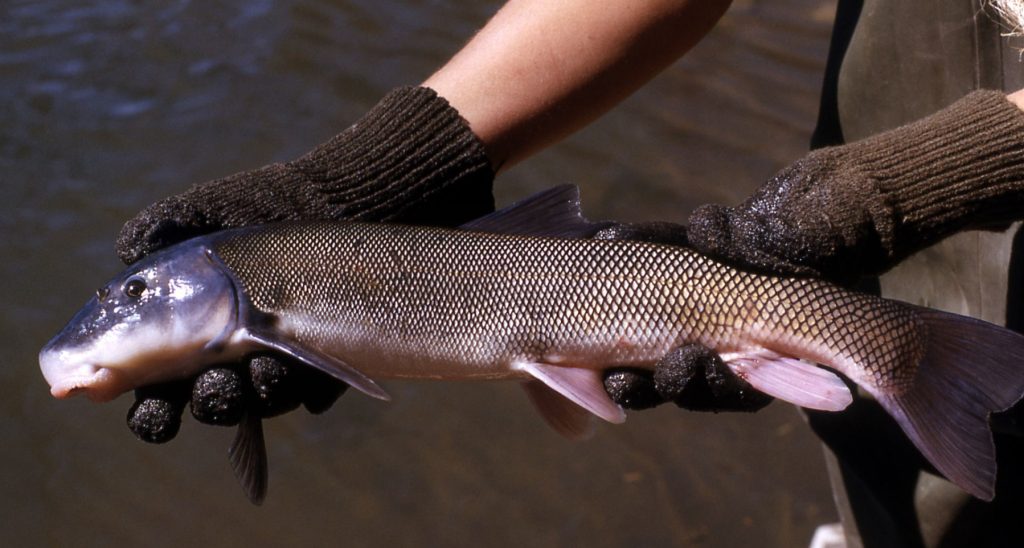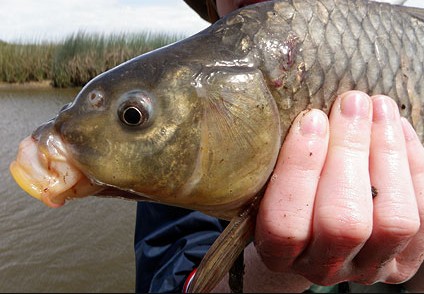A Sucker Born Every Minute
Mountain Suckers Myth Versus Fact
The term sucker fish covers a large variety of freshwater fish, more than 78 different varieties – including catfish and the much-misunderstood mountain sucker. Found throughout western North America, mountain suckers gets their name from the fish’s preferred location of high-altitude mountain streams and lakes.
While this sucker can be found at lower altitudes, most are found about 9,000 feet above sea level on both sides of the Rocky Mountains. Just look for the altitude rivers like the Missouri, Columbia, Sacramento, and Colorado rivers.
Regulated But Not Endangered
While PT Barnum may have said “there’s a sucker born every minute,” the number of mountain suckers has been declining the past few years. Conservation notices and efforts are in place to ensure the number of suckers remains high.
The fish are not endangered. These fish breed well, and their numbers are expected to stabilize.
Still, the smart angler knows to check state and local ordinances first as some areas have limits on size and number of suckers that can be caught.
Native And Nice
Even local fishers will mistakenly believe mountain suckers are a non-native and invasive species. Nothing could be further from the truth. In the Appalachians, suckers are everywhere.
These fish are part of the natural mountain ecology and should be treated as such. Part of the reason conservation efforts are needed is because locals will catch and kill mountain suckers thinking they are invasive.
In truth these fish are unique to the altitudes of North America and should be treated with the respect a native deserves. They congregate throughout the region and are known to gather in large, and very fishable, schools.
Clean And Delicious
Another misconception about suckers is they only live-in polluted waters and are, therefore, bad to eat. In fact, mountain suckers need clean, freshwater rivers for their spawning runs. The cleaner and clearer the water, the more mountain suckers thrive.

That is great news for the fish feasters out there because mountain suckers are a delicious species. With white flesh that is soft in texture as well as taste, many a mountain angler knows that some butter, lemon, and salt and pepper is all it takes to make this fish shine.
In addition, while other anglers are working to debone river trout, mountain sucker bones are soft and easily to melt or remove, especially after baking or searing in a cast iron pan.
A recipe from the 1930s simply tells the angler to nail the sucker’s tail to a plank of wood and lay it by the campfire. When the scales peel off it means the bones have melted and the fish is ready to be dipped in butter and eaten.
Worth The Fight
Growing to about 20 inches and weighing up to five pounds, these fish are great fun to catch. For those looking to up the challenge, ultra-light tackle will bring the fight home and make any sport fisherman smile.
Experienced sucker fishers suggest using light line, light weights, and small hooks. Experts suggest a five-foot spinning combo with line around two-to-six-pound test.
They also suggest having some patience. Even when spawning suckers might take a while before they go for the bait. Once they do, though, be ready to rumble.
An Early Season Target
Another advantage to mountain sucker fishing is that they are one of the first species to spawn each year. As soon as the first frosts start to melt, suckers begin preparing to spawn.
As with other fish, getting ready to spawn means these suckers are working up an appetite and doing their best to get big and fat. Not only does this make them a great early season target fish, it means they remain a solid target for much of the summer.
Since they are also spawning when trout and other game fish are active, mountain suckers can often be caught by accident when trying for the more common sport species.

Mountain Sucker Hangouts
Like many freshwater stream fish, mountain suckers hang out in current breaks. Deep pools, logjams, and eddies are all good places to find big suckers just hanging around.
Because they prefer clean waters, a set of polarized glasses is often one of the best tools for catching mountain suckers. A keen eye looking at river feeders and inlets will often spot groups of mountain suckers resting.
Finally, dams are a favorite place for large groups of suckers to congregate both before and after spawning.
It is Easy to Bait A Sucker
Mountain suckers may be one of the easiest fish to bait. Place a small slip shot weight about a foot above the hook and bait it with pieces of garden worms or nightcrawlers.
Smaller pieces are easier for suckers to take in and will increase an angler’s chances of hooking one. However, larger fish will still go for larger pieces and even whole worms.
For more experienced carp anglers, try adding some pack bait around the sinker to chum the water. For sucker fish, a little bread can go a long way.
Flying High
While most fly fishers go after trout and salmon, mountain suckers are a great target for fly fishing. A seven-foot-long, ten-pound leader should be added to a six weight.
Quick sinking flies tend to work best, especially when patterned after nymphs and worms. As with spinning lines, small hooks will work best as they can be more readily pulled into the mountain sucker’s mouth.
For fly fishers it is important to know that mountain suckers spook easily, so keep track of shadows and the direction of the line to ensure they do not get scared away.
Catching A Glimpse
Throughout the season mountain suckers are a “sight” fish. This means the best way to catch them is to look for them and then drop a line by the school.
This also means they are a great fish for teaching angling skills to kids. Find the fish, prep the line, drop the line, and bring it in. It also makes them a great fish for catching with cane poles.
Are You a Bass Fisher?
Rusty Angler has a lot of great fishing tips for anglers. Learn about the types of bass fish and the right type of kids fishing gear for beginners. Memories last a lifetime!
Featured Image Courtesy of FishBio






